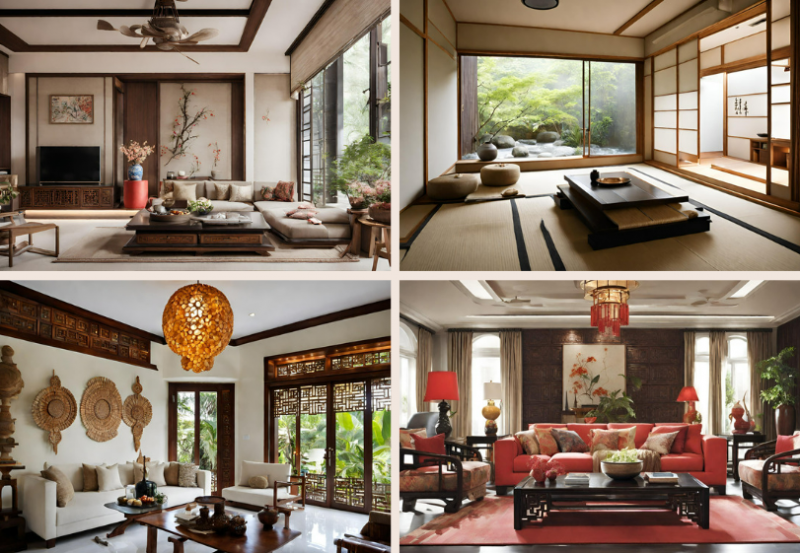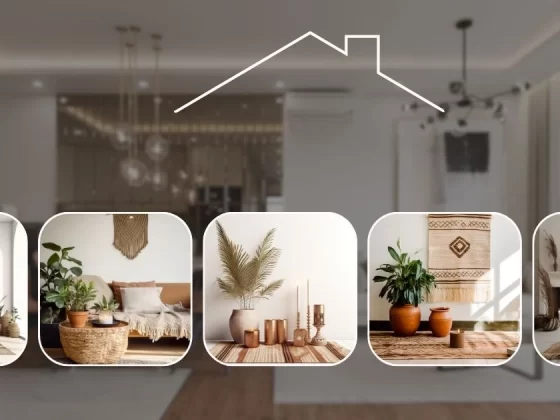Asian style interior design, often referred to as Oriental design, offers a fascinating fusion of artistic influences from various Eastern cultures. Whether you are looking for a serene and calming space or a vibrant and colorful one, you can find inspiration in the diverse and rich Asian design styles.
One of the most well-known and popular Asian design styles is Chinese, which is characterized by bold colors, ornate patterns, and luxurious materials. Chinese design often incorporates elements of Feng Shui, the ancient art of arranging spaces to create harmony and balance. Some of the common features of Chinese design are red lanterns, dragon motifs, silk fabrics, and bamboo furniture.
Another prominent and influential Asian style interior design is Japanese, which is known for its simplicity, elegance, and Zen philosophy. Japanese design often uses natural materials, such as wood, paper, and stone, to create a minimalist and organic look. Some of the common features of Japanese design are sliding doors, tatami mats, bonsai trees, and origami decorations.
Besides Chinese and Japanese, there are many other Asian style interior design that offer unique and captivating aesthetics. For example, Korean design is a blend of modern and traditional elements, featuring bright colors, geometric shapes, and playful accessories. Filipino design is a mix of native and colonial influences, featuring warm tones, tropical plants, and woven textures.
In this article, we’ll explore the essence of Asian style interior design, encompassing Chinese and Japanese influences, while also delving into the captivating worlds of Korean and Filipino styles. We’ll also show you some examples of how to create an Asian-inspired home using natural materials, clean lines, and nature-based accents.
1. Chinese Design:
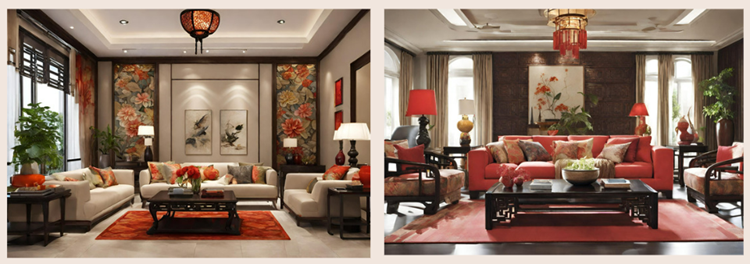
Chinese-inspired interiors are characterized by bold colors, ornate furniture, and eye-catching accessories. The furniture often features intricately carved wooden designs with hand-painted details and high-gloss lacquered surfaces. Accessories continue the dramatic style, showcasing animal motifs and mythological creatures like dragons and monkeys.
Porcelain ginger jars, large vases, and fish pots painted with intricate patterns are popular. Red is a dominant color in Chinese design, symbolizing good luck, while bright colors like yellow and green serve as vibrant accents. Chinoiserie, an art form that replicates the intricate embellishments of Chinese designs, is a sought-after trend. Chinese influence can also be seen in the architectural style of pavilions and garden pagodas.
2. Japanese Design:
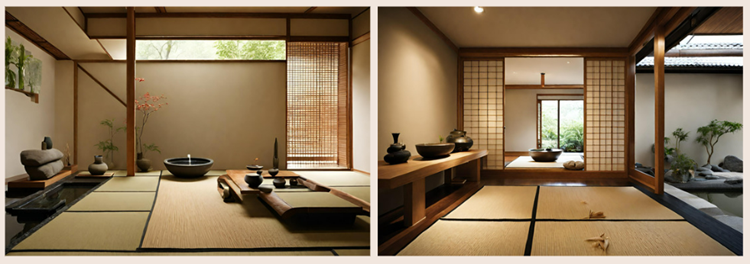
Japanese interiors, on the other hand, exude a calm, Zen-like ambiance with a focus on natural materials and subdued colors. These interiors make use of indoor water fountains and tatami mats for a soothing atmosphere. Tatami mats, or supple straw mats, are used as floor coverings and help define room sizes.
Natural elements like bamboo and stone contribute to a color palette of brown, gray, and green. Furniture and accessories are clean-lined and designed to be close to the floor. Futons are commonly used for bedroom furniture, while low tables and floor cushions are ideal for dining. Elegant floral arrangements, such as orchids and bonsai, add a graceful touch. Translucent shoji screens serve as room dividers and window treatments, allowing natural light to illuminate the space. Rice paper lamps provide a soft, warm glow at night.
3. Korean Design:
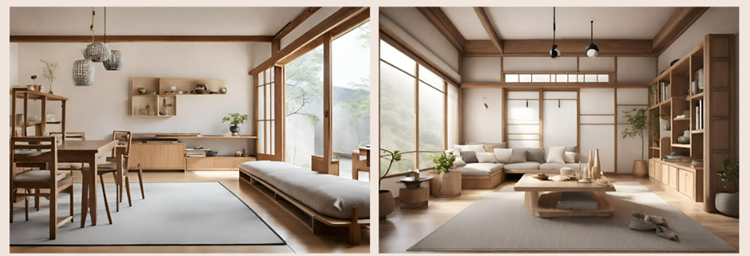
Korean-style interior design offers a harmonious blend of traditional and modern elements. It often features minimalistic and functional furniture, creating a clean and uncluttered space. Natural materials such as wood and stone are prevalent in Korean design, contributing to a warm and inviting atmosphere. Color palettes tend to be soft and neutral, creating a sense of tranquility. Traditional Korean elements like hanbok (traditional clothing) and hanji (traditional paper) are often incorporated into the decor, adding a cultural touch to the design.
4. Filipino Design:

Filipino-style interior design is a celebration of vibrant colors, intricate patterns, and a rich cultural heritage. It often features a fusion of indigenous materials and modern elements. Furniture in Filipino design embraces the use of bamboo, rattan, and other locally sourced materials. Colorful textiles, like the traditional malong and other handwoven fabrics, are used for upholstery and decor. Filipino homes are adorned with intricate capiz shell chandeliers, wooden carvings, and indigenous artwork. This style encapsulates the warmth and hospitality of Filipino culture.
Asian Style Furnishings: To infuse your home with Asian style interior design, opt for low tables, bamboo, and lacquered wood chests, along with sleek sofas that maintain clean lines. Some excellent resources for finding Asian-style furnishings include Tansu.net, Oriental Furnishings, and Oriental Decor.
Asian Design Resources: For further inspiration and ideas, you can explore the Asian Design House and Horchow’s Asian Collection. Books like “East Meets West: Global Design for Contemporary Interiors” by Kelly Hoppen, “China Style” by Sharon Leece and Michael Freeman, and “In the Asian Style: A Design Sourcebook” by Fiona Dunlop are valuable resources.
Fully embracing Asian-style design involves reducing clutter, keeping furniture lines clean and simple, and adding Asian-inspired accessories to create a harmonious and inviting living space. With careful attention to detail and cultural nuances, you can create an Asian-inspired haven in your own home.
Asian style interior design reflects cultural appreciation
Asian style interior design makes your home look beautiful and also shows your respect for different cultures. You can choose from many kinds of Asian styles, such as Chinese, Japanese, Korean, or Filipino. Each one has its own special features and colors.
One of the benefits of Asian style interior design is that it is very flexible and lets you use different things from different places to make your home more interesting. You can mix and match different styles to create a unique and harmonious look. For example, you can use Chinese lanterns, Japanese screens, Korean pillows, and Filipino baskets to decorate your living room. You can also use natural materials, such as bamboo, silk, wood, and stone, to add texture and warmth to your space.
When you design your home in Asian style, you can enjoy the beauty and diversity of Asia. You can also learn more about the cultures, traditions, and histories of different Asian countries. By incorporating Asian style interior design, you can create a home that reflects your unique vision and cultural appreciation.

